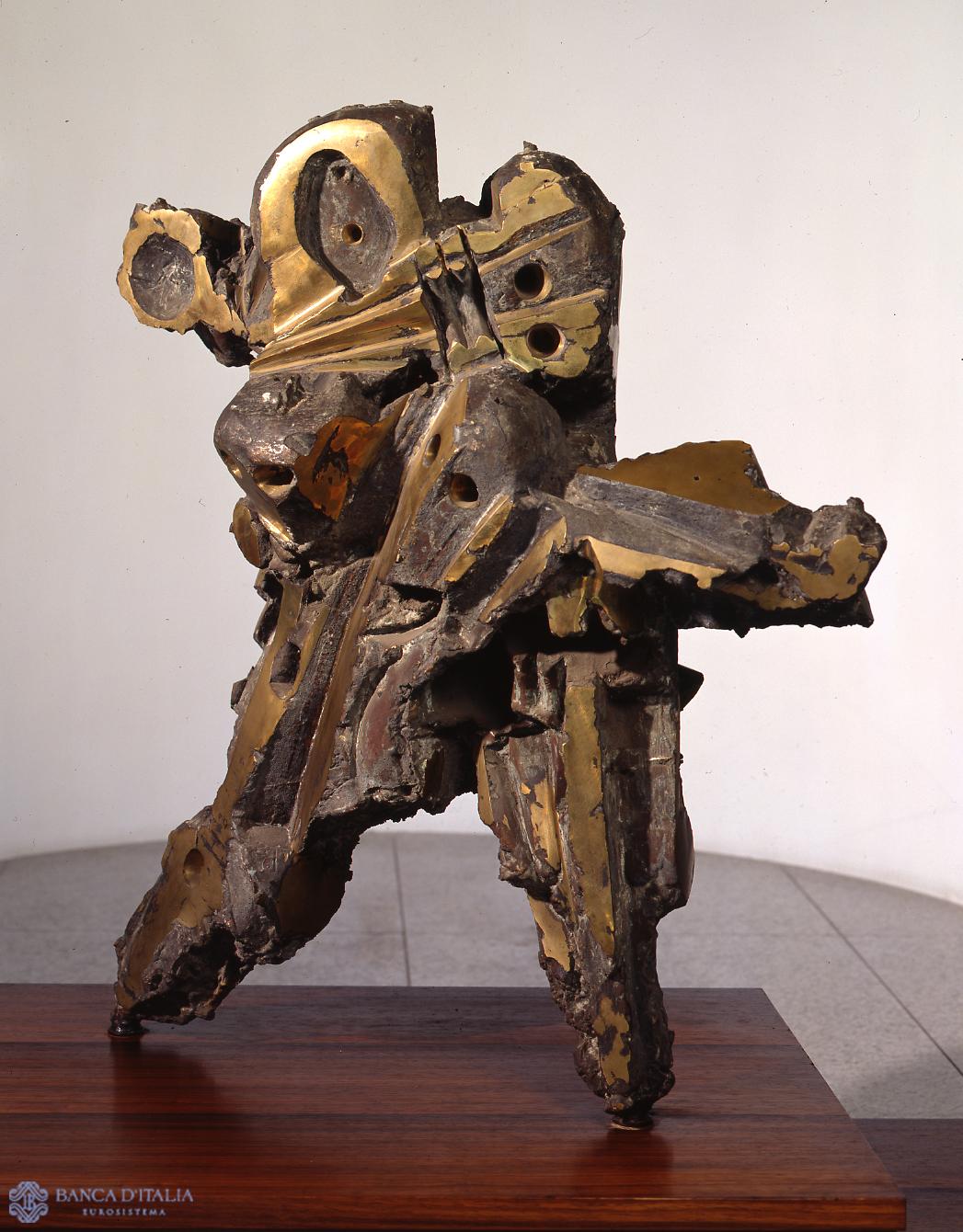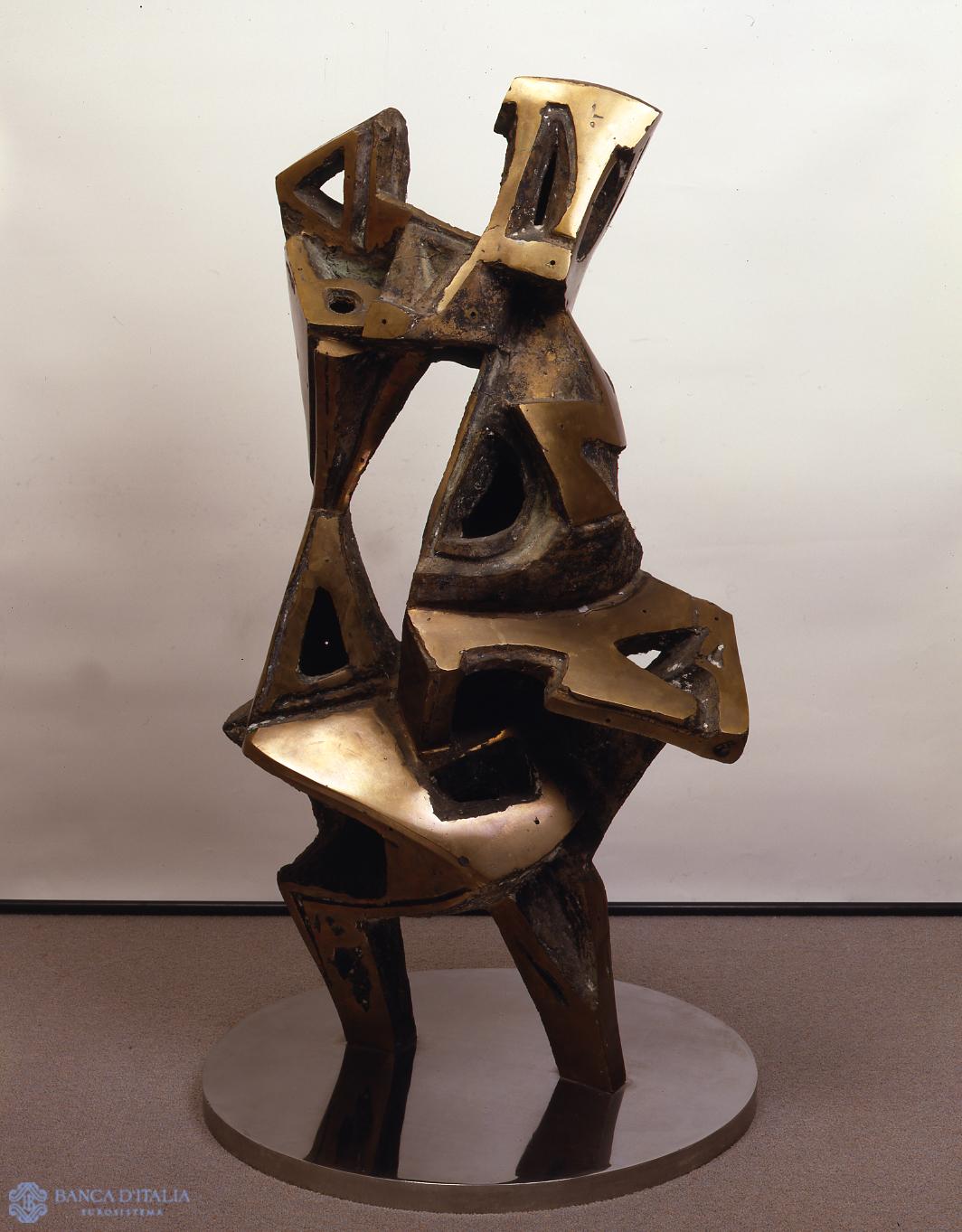Umberto Mastroianni was born in 1910 in Fontana Liri (Frosinone), to a family with its roots in the area and which had produced a number of artists and a famous actor – Marcello Mastroianni, friend of Federico Fellini and many other Italian and foreign film directors. Umberto’s uncle Domenico was a sculptor who taught him the basics in Rome. From the age of 14, Mastroianni displayed a special passion for sculpture. He went to evening classes at the church of San Marcello al Corso and in 1926 he moved to Turin where he soon revealed his talent. After an initial phase when he studied ancient sculpture in more depth, producing bas-reliefs of extraordinary vitality, he nevertheless managed to avoid the 20th century fashion of academicism and instead he developed his interest in materials. He had a lively and energetic temperament and he soon acquired authority in the Turin milieu and inspired by the dynamism of Futurism he translated the dynamic plasticism of Boccioni into new forms.
As early as 1935 De Pisis commented “Mastroianni is an artist of great talent and is certainly one of the best young Italians”. The movement that the artist developed in his compositions was, and will remain, the distinctive character of his sculpture. The direction of movement, already present in 1952 in Materia, was to be a constant in his work. When, in the mid-1950s, Mastroianni developed an interest in informal language, investigating bronze and seeking in its depths the germinal nucleus of the energy of matter. Matter was his constant concern; he bent it and transformed it continuously in new ways while nevertheless remaining faithful to the principle of dynamism. From the 1970s his forms became enriched by the luminous and plastic contrast between smooth elements and rough surfaces, which most effectively returned matter to its original richness and complexity. He died in Marino (Rome) in 1998 leaving the works that he had collected (sculptures, moulds, casts, draft drawings, and engravings) to the town of Arpino which dedicated a museum and a foundation to him.
Umberto Mastroianni
Umberto Mastroianni (Fontana Liri 1910 - Marino 1998)
20th century AD



